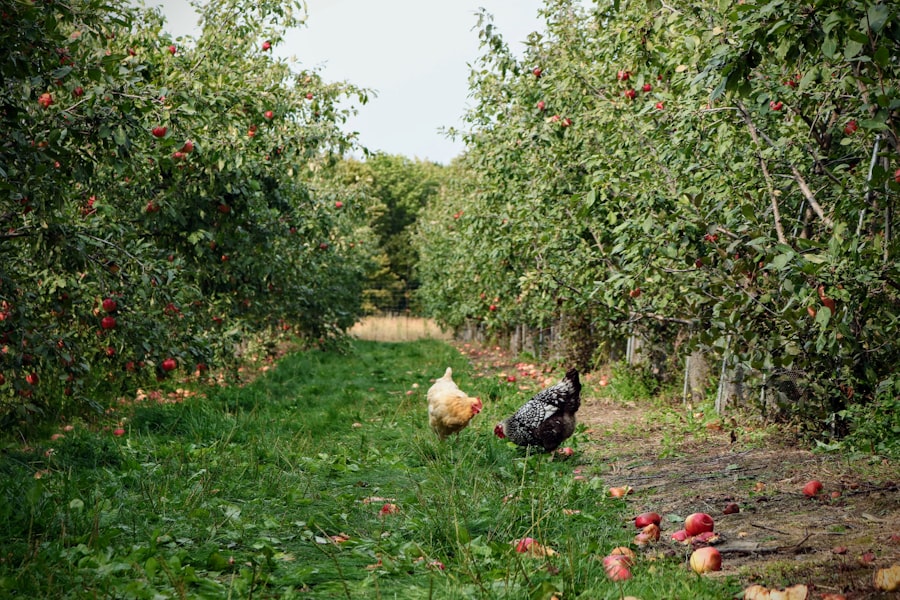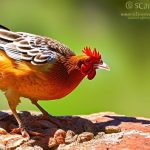Fencing and cooping are essential aspects of keeping chickens safe and secure. Whether you have a small backyard flock or a large commercial operation, it is crucial to provide a safe and secure environment for your chickens. This article will discuss the importance of fencing and cooping for chickens and provide tips on how to ensure their safety.
Key Takeaways
- Fencing and cooping are essential for keeping chickens safe from predators.
- Choosing the right fencing material and ensuring proper height are crucial for effective protection.
- Adding a roof to the chicken coop provides extra security and protection from weather.
- Providing adequate space and clipping wings can prevent chickens from escaping and getting into danger.
- Installing a netting system and training chickens to stay grounded can further enhance safety and security.
Understanding the Need for Fencing and Cooping
Chickens need to be fenced and cooped for several reasons. One of the main reasons is to protect them from predators. Chickens are vulnerable to attacks from predators such as foxes, raccoons, and even neighborhood dogs. Fencing helps create a barrier between the chickens and potential threats, keeping them safe from harm.
Another reason for fencing and cooping is to prevent chickens from wandering off. Chickens have a natural instinct to explore their surroundings, which can lead them into dangerous situations. By providing a secure enclosure, you can ensure that your chickens stay within a designated area and avoid getting lost or injured.
Choosing the Right Fencing Material
When it comes to choosing the right fencing material for your chicken coop, there are several options available. The most common types of fencing materials include wire mesh, chain link, and electric fencing.
Wire mesh is a popular choice for chicken coops because it provides excellent protection against predators. It is durable, easy to install, and allows for good airflow. However, it can be more expensive compared to other options.
Chain link fencing is another option that provides good protection for chickens. It is sturdy, long-lasting, and allows for good visibility. However, it may not be as effective in keeping out smaller predators like rats or snakes.
Electric fencing is a more advanced option that uses an electric charge to deter predators. It can be effective in keeping out larger animals like foxes or coyotes. However, it requires proper installation and maintenance to ensure its effectiveness.
Ensuring Proper Fencing Height
Proper fencing height is crucial to keep chickens safe and secure. The height of the fence should be determined based on the size and breed of your chickens, as well as the potential threats in your area.
For most standard-sized chickens, a fence height of at least 6 feet is recommended. This will prevent them from flying over the fence and keep them safe from predators. However, if you have larger or more flighty breeds, you may need to increase the height of the fence.
It is also important to consider the potential threats in your area when determining the appropriate fencing height. If you live in an area with a high population of predators, you may need to install a taller fence or add additional measures such as electric fencing or netting.
Adding a Roof to the Chicken Coop
Adding a roof to your chicken coop has several benefits. It provides protection from the elements, such as rain, snow, and excessive heat. It also helps keep predators out by creating a barrier that is difficult for them to penetrate.
When installing a roof on your chicken coop, it is important to choose a material that is durable and weather-resistant. Metal roofing is a popular choice because it is long-lasting and provides excellent protection against the elements. However, it can be more expensive compared to other options.
Another option for a chicken coop roof is corrugated plastic or fiberglass panels. These materials are lightweight, easy to install, and provide good protection against the elements. However, they may not be as durable as metal roofing and may need to be replaced more frequently.
Providing Adequate Space for the Chickens

Providing enough space for your chickens is essential for their health and well-being. Overcrowding can lead to stress, aggression, and the spread of diseases. It is important to determine the appropriate amount of space based on the number and size of your chickens.
A general rule of thumb is to provide at least 4 square feet of space per chicken in the coop and 10 square feet per chicken in the outdoor run. However, it is always better to provide more space if possible.
In addition to the coop and run, chickens also need access to a dust bath area. This is where they can roll around in dust to keep their feathers clean and free from parasites. The dust bath area should be at least 2 square feet per chicken and filled with sand or fine dirt.
Clipping the Wings of the Chickens
Clipping the wings of your chickens can help prevent them from flying over fences and escaping from their designated area. It is a simple and painless procedure that involves trimming the primary flight feathers on one wing.
To clip the wings, you will need a pair of sharp scissors or poultry shears. Hold the chicken securely and extend one wing at a time. Trim about 1 inch off the primary flight feathers on each wing, making sure to avoid cutting into the blood feathers.
It is important to note that wing clipping is not a permanent solution and will need to be done regularly as the feathers grow back. It is also important to monitor your chickens after clipping their wings to ensure they are not able to fly or escape.
Installing a Netting System
Installing a netting system can provide an additional layer of protection for your chickens. Netting can be used to cover the top of the coop or run, preventing predators from entering from above.
When installing a netting system, it is important to choose a material that is strong and durable. Look for netting that is specifically designed for poultry or small animals, as it will be more effective in keeping out predators.
To install the netting, you will need to attach it securely to the top of the coop or run using zip ties or clips. Make sure the netting is pulled tight and does not sag, as this can provide a foothold for predators.
Training the Chickens to Stay Grounded
Training your chickens to stay grounded is an important step in keeping them safe and secure. Chickens have a natural instinct to fly and explore their surroundings, but it is important to teach them to stay within their designated area.
One way to train chickens to stay grounded is by providing plenty of enrichment in their coop and run. This can include perches, toys, and treats that keep them occupied and engaged. By providing a stimulating environment, chickens are less likely to try to escape.
Another method is to use positive reinforcement. Reward chickens with treats or praise when they stay within their designated area. This will help reinforce the behavior and encourage them to stay grounded.
A Safe and Secure Home for Your Chickens
In conclusion, fencing and cooping are essential for keeping chickens safe and secure. By choosing the right fencing material, ensuring proper fencing height, adding a roof to the chicken coop, providing adequate space, clipping the wings, installing a netting system, and training the chickens to stay grounded, you can create a safe and secure home for your chickens.
Remember that each chicken is unique, and it is important to assess their specific needs when implementing these measures. By taking the necessary steps to protect your chickens, you can ensure their safety and well-being for years to come.
If you’re looking for the best way to keep chickens from flying over the fence, you might find this article on Poultry Wizard’s website helpful. They have a comprehensive guide on chicken coops, including tips and tricks to prevent your feathered friends from taking flight. Check out their article on Hannah Montana Chicken Coop for some innovative ideas on how to create a secure and comfortable space for your chickens.
FAQs
What is the best way to keep chickens from flying over a fence?
The best way to keep chickens from flying over a fence is to clip their wings. This involves trimming the primary feathers on one wing, which will make it difficult for the chicken to achieve lift and fly over the fence.
How do you clip a chicken’s wings?
To clip a chicken’s wings, you will need to trim the primary feathers on one wing. This involves cutting the feathers about halfway down the length of the feather. It is important to avoid cutting too close to the chicken’s body or cutting any blood feathers.
Is it safe to clip a chicken’s wings?
Yes, it is safe to clip a chicken’s wings if done correctly. It is important to use sharp scissors and avoid cutting too close to the chicken’s body or cutting any blood feathers. Clipping a chicken’s wings is a painless procedure that will not harm the chicken.
How often do you need to clip a chicken’s wings?
You will need to clip a chicken’s wings every 6-12 months, depending on how quickly the feathers grow back. It is important to keep an eye on your chickens and clip their wings as needed to prevent them from flying over the fence.
Are there any other ways to keep chickens from flying over a fence?
Yes, there are other ways to keep chickens from flying over a fence. You can install netting or wire over the top of the fence to prevent the chickens from flying over. You can also raise the height of the fence or install a barrier around the perimeter of the chicken coop to prevent the chickens from getting close to the fence.
Meet Walter, the feathered-friend fanatic of Florida! Nestled in the sunshine state, Walter struts through life with his feathered companions, clucking his way to happiness. With a coop that’s fancier than a five-star hotel, he’s the Don Juan of the chicken world. When he’s not teaching his hens to do the cha-cha, you’ll find him in a heated debate with his prized rooster, Sir Clucks-a-Lot. Walter’s poultry passion is no yolk; he’s the sunny-side-up guy you never knew you needed in your flock of friends!








